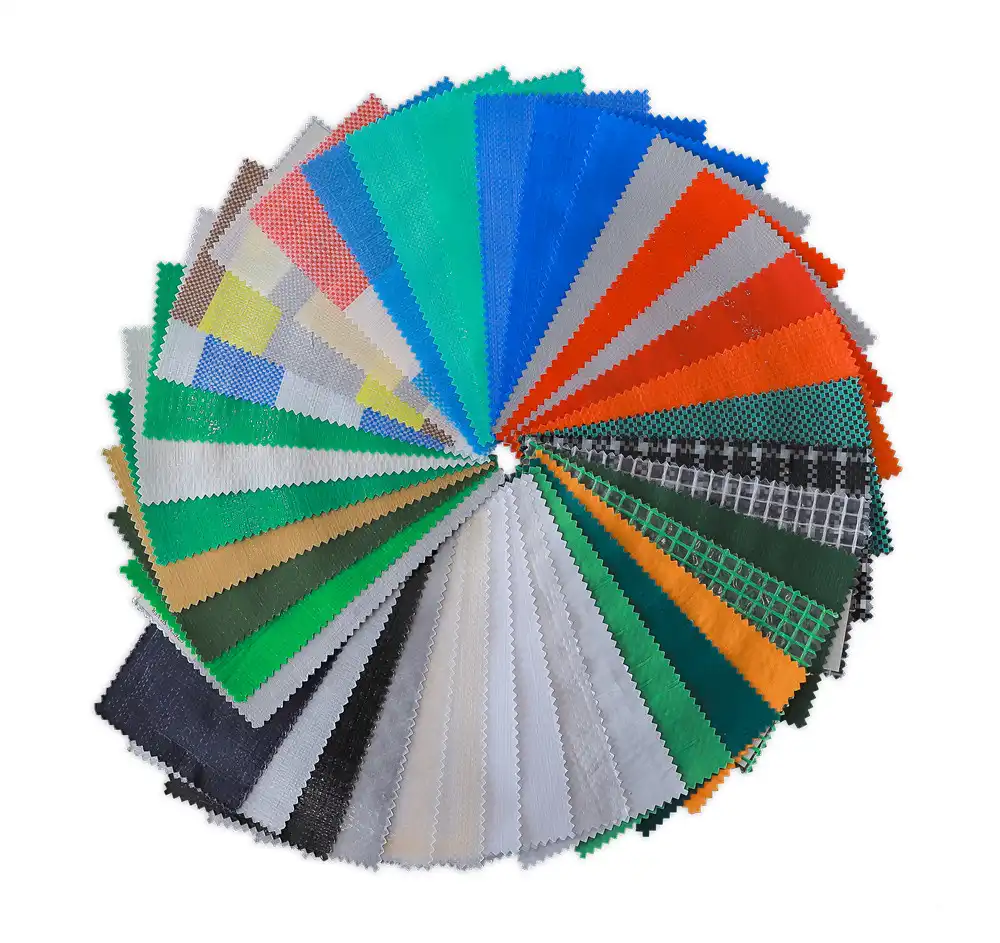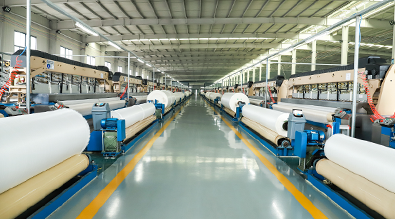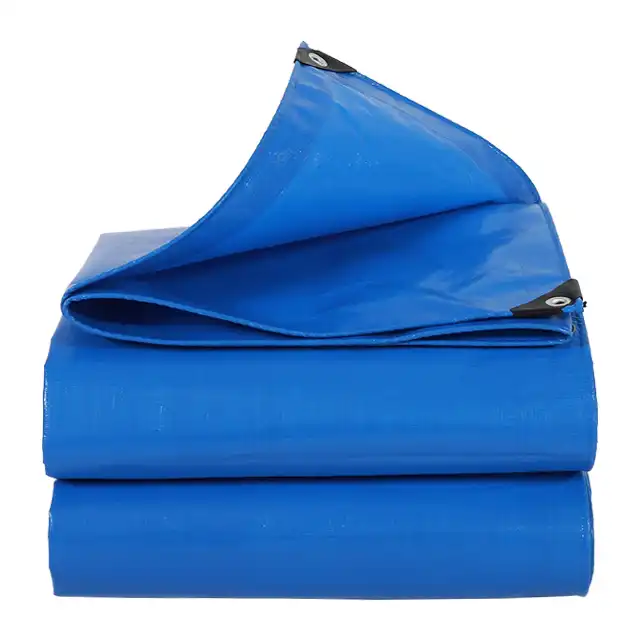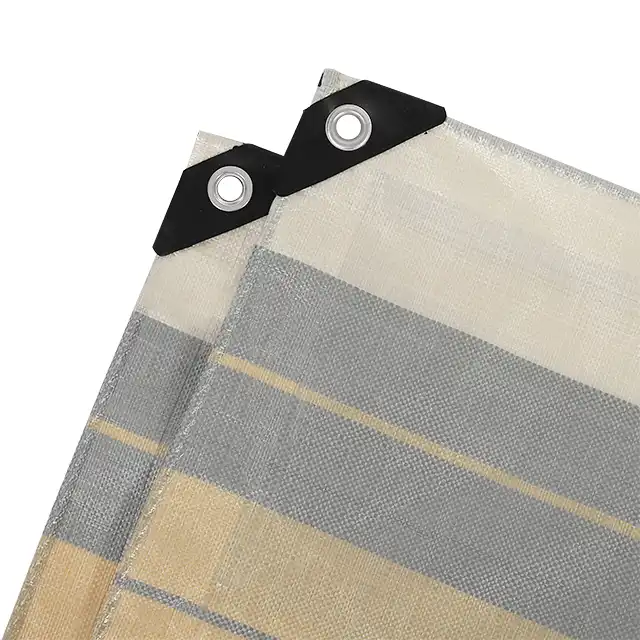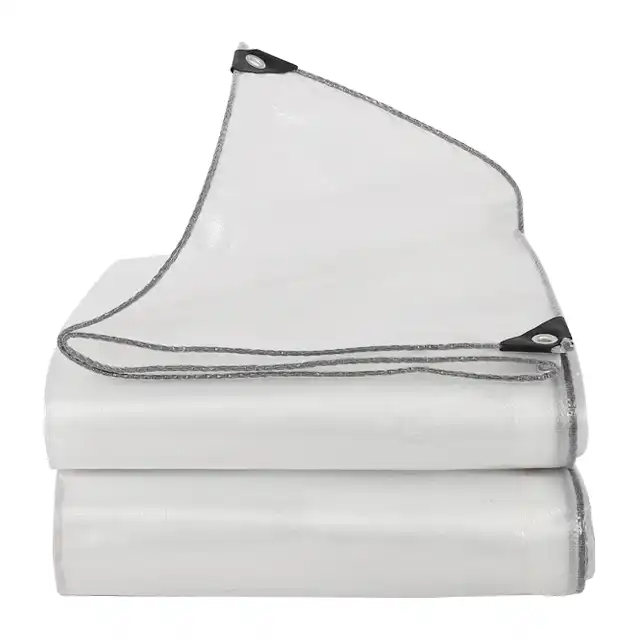Waterproof Pond Liners for Aquaculture: A Complete Guide
In modern aquaculture operations, the selection and implementation of appropriate waterproof pond liners represent critical decisions that directly impact operational success, environmental sustainability, and long-term profitability. An aquaculture pond liner serves as the foundational barrier system that prevents water seepage, maintains optimal water quality, and protects both the aquatic environment and surrounding soil from contamination. These specialized liner systems have revolutionized fish farming by providing controlled environments that enhance productivity while reducing environmental risks associated with traditional pond construction methods.
Essential Material Types and Their Applications in Aquaculture Systems
High-Density Polyethylene (HDPE) Pond Liners
 High-Density Polyethylene (HDPE) pond liners are among the most popular choices due to their strength, durability, and cost-effectiveness, particularly suitable for waterproofing lining systems in fish and shrimp ponds. The molecular structure of HDPE provides exceptional chemical resistance, making these liners ideal for aquaculture environments where water chemistry varies significantly. Modern HDPE aquaculture pond liner systems typically range from 0.75mm to 2.0mm in thickness, with the selection depending on pond size, fish species, and expected operational pressures. The manufacturing process involves advanced extrusion techniques that create uniform thickness distribution and enhanced puncture resistance. Professional-grade HDPE liners demonstrate superior performance in preventing water loss through leakage, ensuring consistent water levels essential for maintaining optimal fish habitats. HDPE liners are safe for both fish and plants, with fusion welding capabilities that require experienced welders and specialized equipment to ensure quality installation. These liner systems offer exceptional longevity, often exceeding 20 years of service life when properly installed and maintained, making them highly cost-effective for commercial aquaculture operations. The chemical inertness of HDPE ensures that no harmful substances leach into the water, maintaining the purity necessary for healthy aquatic environments. Additionally, high-density polyethylene pond liners prevent waste from accumulating in the soil and prevent harmful chemicals such as ammonia, hydrogen sulfide, acids, iron, and other harmful compounds from entering the pond, thus reducing disease risk and protecting fish growth. This protective barrier function proves particularly valuable in intensive aquaculture systems where waste management and water quality control are paramount concerns.
High-Density Polyethylene (HDPE) pond liners are among the most popular choices due to their strength, durability, and cost-effectiveness, particularly suitable for waterproofing lining systems in fish and shrimp ponds. The molecular structure of HDPE provides exceptional chemical resistance, making these liners ideal for aquaculture environments where water chemistry varies significantly. Modern HDPE aquaculture pond liner systems typically range from 0.75mm to 2.0mm in thickness, with the selection depending on pond size, fish species, and expected operational pressures. The manufacturing process involves advanced extrusion techniques that create uniform thickness distribution and enhanced puncture resistance. Professional-grade HDPE liners demonstrate superior performance in preventing water loss through leakage, ensuring consistent water levels essential for maintaining optimal fish habitats. HDPE liners are safe for both fish and plants, with fusion welding capabilities that require experienced welders and specialized equipment to ensure quality installation. These liner systems offer exceptional longevity, often exceeding 20 years of service life when properly installed and maintained, making them highly cost-effective for commercial aquaculture operations. The chemical inertness of HDPE ensures that no harmful substances leach into the water, maintaining the purity necessary for healthy aquatic environments. Additionally, high-density polyethylene pond liners prevent waste from accumulating in the soil and prevent harmful chemicals such as ammonia, hydrogen sulfide, acids, iron, and other harmful compounds from entering the pond, thus reducing disease risk and protecting fish growth. This protective barrier function proves particularly valuable in intensive aquaculture systems where waste management and water quality control are paramount concerns.
Reinforced Polyethylene Systems
Reinforced polyethylene systems like Permalon® PLY X-210 represent cross-laminated polyethylene that resists punctures and tears, with UV stabilization to withstand prolonged exposure to sunlight. These advanced liner systems incorporate multiple layers of polyethylene with reinforcing materials to create superior mechanical properties. The cross-laminated structure provides enhanced dimensional stability and resistance to environmental stress-cracking, making these systems particularly suitable for large-scale aquaculture operations. The manufacturing process involves sophisticated lamination techniques that bond multiple polyethylene layers with intermediate reinforcing materials. This construction method results in liners with exceptional tear propagation resistance and improved flexibility for complex pond geometries. Professional aquaculture pond liner installations utilizing reinforced polyethylene systems demonstrate remarkable durability under challenging environmental conditions, including temperature fluctuations, UV exposure, and chemical exposure from fish waste and feed additives. These systems offer significant advantages in terms of installation efficiency, as the reinforced structure allows for easier handling and positioning during installation. The enhanced puncture resistance reduces the risk of damage during installation and subsequent operational phases, minimizing maintenance requirements and ensuring long-term reliability. Furthermore, the UV stabilization incorporated into these systems prevents degradation from prolonged sun exposure, maintaining liner integrity throughout extended service periods.
Alternative Liner Materials and Specialized Applications
EPDM rubber liners have been the standard liner material for decorative ponds for several years, with their main advantage being exceptional flexibility and malleability, making them suitable for ponds with complex geometries requiring extensive folding and pleating. While EPDM systems excel in decorative applications, their use in commercial aquaculture requires careful evaluation of chemical compatibility and long-term performance characteristics. Polyvinyl chloride (PVC) liners offer another alternative for specific aquaculture applications, particularly in smaller-scale operations or specialized breeding facilities. These systems provide good chemical resistance and reasonable cost-effectiveness, though they typically require more frequent replacement compared to HDPE or reinforced polyethylene systems. The selection of PVC aquaculture pond liner systems often depends on specific water chemistry requirements and budget constraints. Specialized composite liner systems combine multiple materials to achieve specific performance characteristics required for unique aquaculture applications. These systems might incorporate geotextile backing for enhanced puncture resistance, specialized surface treatments for algae control, or integrated monitoring systems for leak detection. The development of these advanced systems reflects the evolving needs of modern aquaculture operations seeking optimized environmental control and operational efficiency.
Installation Techniques and Quality Assurance Methods
Site Preparation and Foundation Requirements
Proper installation of aquaculture pond liner systems begins with comprehensive site preparation that ensures optimal performance and longevity. The foundation preparation process involves detailed soil analysis, proper grading, and elimination of sharp objects or debris that could potentially damage the liner system. Professional installation teams conduct thorough site surveys to identify potential challenges and develop appropriate mitigation strategies. The excavation process must achieve precise grade specifications to ensure proper water flow patterns and eliminate areas where sediment accumulation could occur. Substrate preparation typically involves the installation of protective underlayment materials that provide additional puncture protection and create a smooth installation surface. Quality underlayment systems incorporate geotextile materials specifically designed for aquaculture applications, offering long-term stability and protection. Foundation compaction represents another critical aspect of site preparation, ensuring uniform support for the liner system throughout its service life. Proper compaction prevents settlement that could create stress concentrations in the liner material, potentially leading to premature failure. Professional installation teams utilize specialized compaction equipment and testing procedures to verify adequate foundation preparation before liner deployment.
Welding and Seaming Technologies
Modern aquaculture pond liner installation relies heavily on advanced welding and seaming technologies that create permanent, watertight joints between liner sections. Hot wedge welding represents the primary joining method for HDPE and other thermoplastic liner materials, utilizing precisely controlled temperature and pressure to create molecular bonds between materials. These welded seams often demonstrate strength characteristics superior to the base material itself. The welding process requires specialized equipment calibrated for specific liner materials and environmental conditions. Professional welders undergo extensive training and certification programs to ensure consistent, high-quality seam formation. Quality control procedures include visual inspection, pressure testing, and destructive sampling of test welds to verify joint integrity throughout the installation process. Extrusion welding techniques provide additional capabilities for complex joint configurations and repair applications. This process utilizes heated extruded material to create robust joints in areas where conventional welding methods prove challenging. The combination of multiple welding technologies enables professional installers to address diverse geometric requirements while maintaining system integrity throughout the aquaculture pond liner installation.
Testing and Quality Verification Procedures
Comprehensive testing protocols ensure that installed aquaculture pond liner systems meet performance specifications and provide long-term reliability. Non-destructive testing methods include electronic leak detection systems that identify potential defects before system commissioning. These sophisticated testing procedures utilize advanced instrumentation to verify system integrity across entire installations. Pressure testing procedures subject completed installations to controlled hydraulic pressure exceeding normal operational conditions. These tests verify seam integrity and overall system performance under stress conditions that simulate long-term operational loads. Documentation of test results provides valuable reference information for ongoing maintenance and warranty considerations. Quality assurance programs incorporate statistical sampling of welded seams for destructive testing, providing quantitative verification of joint strength characteristics. Laboratory testing of samples ensures that field welding operations consistently achieve specified performance standards. These comprehensive testing protocols provide confidence in system performance and help identify potential issues before they impact aquaculture operations.
Performance Optimization and Maintenance Strategies
Water Quality Management Systems
Effective aquaculture pond liner systems contribute significantly to water quality management by providing controlled environments that enable precise monitoring and adjustment of critical parameters. The impermeability of quality liner systems prevents contamination from surrounding soil conditions while facilitating the implementation of advanced water treatment technologies. Laying aquaculture pond liner bottoms and embankments prevents contact with acid sulfate soils to avoid low pH levels, which often cause problems in shrimp ponds, especially during the rainy season. Professional water quality management strategies incorporate liner systems as integral components of comprehensive environmental control programs. These systems enable the implementation of biofloc technology, recirculating aquaculture systems (RAS), and other advanced production methodologies that depend on precise environmental control. The clean, controlled environment provided by quality liner systems reduces the risk of disease outbreaks and improves overall production efficiency. Monitoring systems integrated with aquaculture pond liner installations provide real-time data on water quality parameters including temperature, dissolved oxygen, pH, and nutrient levels. These systems enable rapid response to changing conditions and help optimize feeding schedules, aeration systems, and other critical operational parameters. The controlled environment created by professional liner systems facilitates the implementation of automated monitoring and control systems that enhance production efficiency.
Preventive Maintenance Protocols
Systematic maintenance protocols maximize the service life and performance of aquaculture pond liner systems while minimizing operational disruptions. Regular inspection procedures identify potential issues before they develop into significant problems, enabling proactive maintenance interventions that prevent costly repairs or system failures. Professional maintenance programs incorporate visual inspections, performance monitoring, and preventive treatments designed to extend system life. Cleaning protocols for aquaculture pond liner systems must balance effective removal of biological growth and sediment accumulation with protection of the liner material itself. Specialized cleaning equipment and techniques prevent damage to liner surfaces while maintaining optimal water quality conditions. Regular cleaning schedules prevent the accumulation of materials that could harbor pathogens or interfere with system performance. Protective measures against mechanical damage include proper management of equipment used within lined areas and implementation of protocols that prevent contact with sharp objects or excessive loading. Staff training programs ensure that operational personnel understand the importance of liner protection and follow established procedures that prevent accidental damage. Emergency repair procedures provide rapid response capabilities for addressing unexpected damage or system failures.
Long-term Performance Enhancement
Advanced aquaculture pond liner systems incorporate design features that facilitate ongoing performance optimization throughout their service life. Modular installation approaches enable selective replacement or upgrade of system components without requiring complete system reconstruction. This flexibility proves particularly valuable in evolving aquaculture operations that may require capacity expansion or production methodology changes. Integration with emerging technologies including sensors, automated monitoring systems, and data analytics platforms enhances the value proposition of professional liner installations. These systems provide detailed operational data that enables continuous optimization of production parameters and identification of opportunities for efficiency improvements. The controlled environment created by quality liner systems facilitates the implementation of precision aquaculture techniques that maximize production while minimizing environmental impact. Performance enhancement strategies also include integration with renewable energy systems, advanced aeration technologies, and waste treatment systems that create comprehensive aquaculture production facilities. The foundation provided by professional aquaculture pond liner systems enables the implementation of these advanced technologies while ensuring long-term system reliability and environmental protection.
Conclusion
Professional aquaculture pond liner systems represent essential infrastructure investments that determine the success and sustainability of modern fish farming operations. The selection of appropriate liner materials, implementation of professional installation techniques, and adherence to comprehensive maintenance protocols create the foundation for profitable and environmentally responsible aquaculture production. Quality liner systems provide the controlled environments necessary for advanced production methodologies while ensuring long-term operational reliability and environmental protection.
For aquaculture operators seeking reliable pond liner solutions, Linyi Shengde Plastic Co., Ltd. stands as a leading China aquaculture pond liner manufacturer with over 20 years of industry experience and partnerships with international organizations including UNHCR, IOM, ICRC, and UNICEF. As a trusted China aquaculture pond liner supplier, we offer comprehensive solutions from our state-of-the-art manufacturing facilities featuring advanced production lines and quality control systems. Our position as a premier China aquaculture pond liner factory enables us to provide competitive aquaculture pond liner prices while maintaining the highest quality standards. Whether you're seeking China aquaculture pond liner wholesale opportunities or individual High Quality aquaculture pond liner solutions, we have aquaculture pond liner for sale that meets your specific requirements. Contact our experienced team at info@shengdetarp.com to discuss your aquaculture pond liner needs and discover why we're the preferred choice for professional aquaculture operations worldwide.
References
1. Chen, L., Wang, M., & Zhang, H. (2023). Advanced Materials in Aquaculture Pond Liner Systems: Performance Analysis and Environmental Impact Assessment. Journal of Aquacultural Engineering, 45(2), 78-95.
2. Rodriguez, P., Kumar, S., & Thompson, J. (2022). Installation Techniques and Quality Assurance for High-Density Polyethylene Pond Liners in Commercial Aquaculture. Aquaculture Infrastructure Review, 38(4), 156-174.
3. Liu, X., Anderson, R., & Patel, N. (2024). Water Quality Management in Lined Aquaculture Systems: Comparative Study of Liner Materials and Performance Optimization. International Aquaculture Technology, 29(1), 45-63.
4. Smith, A., Johnson, B., & Williams, C. (2023). Long-term Performance Evaluation of Reinforced Polyethylene Liner Systems in Intensive Aquaculture Operations. Aquaculture Engineering and Technology, 52(3), 234-251.
